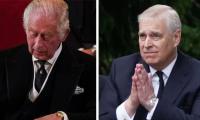LAHORE: Environmentalists and energy experts have lauded the government’s New Energy Vehicle (NEV) Policy 2025-2030, describing it as both “timely” and “a step in the right direction”.
The policy aims to transition 30 per cent of all new vehicles -- both imported and locally manufactured -- to electric power by 2030. It includes a range of technologies such as battery-electric vehicles (BEVs), hybrid electric vehicles (HEVs) and hydrogen fuel cell vehicles.
To promote adoption, the government has announced subsidies of Rs50,000 for electric motorcycles and Rs200,000 for three-wheelers, with a total allocation of Rs4 billion. Thus far, two companies have been licensed under the policy, with 31 additional applications under review.
“The vehicle policy is timely and addresses critical issues like the high oil import bill, underutilised power plants incurring capacity payments, and transportation-related smog and greenhouse gas emissions,” said Dr Naveed Arshad, associate professor and co-director of the LUMS Energy Institute. He added, “Unlike the earlier policy (2019-20), this updated version is more robust, offering clear targets, tax breaks and government funding for EV projects.”
Dr Arshad also addressed concerns from the auto sector, noting that the policy is designed to benefit both new and existing players.
However, he added that traditional automakers must adapt to the evolving EV landscape. Current business models, which rely heavily on after-sales services like engine maintenance, are incompatible with EVs due to their minimal maintenance requirements. Automakers, he suggested, should pivot to areas like charging infrastructure, software development and other innovative revenue streams.
“If existing players fail to adapt, they risk falling behind, much like Nokia did during the smartphone revolution,” Dr Arshad warned. “As EVs achieve price parity with fuel-based vehicles in the coming years, consumer demand will naturally shift. Automakers need to evolve their business models and product lines now to remain competitive and avoid losing market share to newer, more agile competitors offering better, cheaper, and safer products.” Addressing concerns about affordability, Dr Arshad explained that while the upfront cost of electric motorcycles may be double that of fuel-powered ones, the total cost of ownership (TCO) equalises after approximately three years. Beyond this point, EVs offer significant savings. Federal and provincial subsidies, along with banking schemes, are expected to further bridge the affordability gap between NEVs and traditional vehicles, encouraging adoption.
When asked about the potential dominance of Chinese NEVs in the market, Dr Arshad remarked that the policy seeks to leverage China’s strengths in EV technology to benefit Pakistan. While Chinese brands may dominate initially, the policy emphasises localising production, particularly for smaller vehicles like two- and three-wheelers. For larger vehicles, the focus will be on manufacturing high-value components domestically. This targeted approach, he said, will enhance exports, reduce costs, improve quality and decrease reliance on imports.
An image of Gwadar Port, Balochistan. — Gwadar Port Authority website/FileKARACHI: Faisal Dashti, founding president...
This representational image shows eggs kept in and outside a bowl. — Unsplash/FileKARACHI: The book-building process...
A representational image of vehicles parked in Dubai. — AFP/FileKARACHI: Global mobility and urban services platform...
An undated image of gold bangles. — AFP/FileKARACHI: Gold prices rose by Rs1,000 per tola on Tuesday in the local...
CEO of Eighteen Housing Tarek Hamdy. —Screengrab via Facebook@Eighteen.elite.pk/FileLAHORE: Tarek Hamdy, CEO of...
An ibis bird perches next to the Reserve Bank of Australia headquarters in central Sydney, Australia February 6,...







